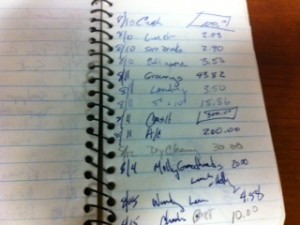Young Ned and his wife Sally really want a home of their own. Ned has been at the same job for a couple of years and Sally stays home with their 1 year old. They have been reasonably careful with their money. They have an old, but reliable, Honda Ned’s parents gave him when he graduated from college and no credit card debt. Ned makes $50K a year and Sally’s parents have given them $10K to use as the down payment. Ned and Sally go to an online lender to get pre-qualified for a mortgage. Using the lender’s “Home Affordability Calculator” Ned and Sally are told they can afford a monthly payment of $1,499.76 including taxes and insurance. Estimating taxes and insurance at $5,500, Ned and Sally start shopping for a $200,000 home.
Not too far away another young couple is dreaming of a home of their own as well. Paul and Janet have a new baby and are finding their tiny apartment rather cramped. Paul makes $50k a year but has 15% of his pay going to his 401K. Paul and Janet never see that money, so they budget as if it doesn’t exist.
Paul and Janet have recently struggled and sacrificed to pay off the credit card debt they ran up when they were in school.
Janet has been reading money management books and knows that they should put at least 10% down on a house and that their mortgage should be no more then 25% of their take-home pay. Using Paul’s take-home pay after taxes and the 401K deductions, Janet calculates a maximum mortgage payment of $764. She knows they can afford a $100,000 home with a 15 year mortgage.
Before they can go home shopping, they know they must save the down payment and build their emergency fund to equal at least three months of expenses.
Paul takes on as many overtime hours as he can get at work and Janet takes the baby to the neighbors three times a week to watch their 3 year old. With this additional income and cutting their expenses as low as they can go, Paul and Janet are able to save $2000 a month for 8 months.
Ned & Sally end up with a $200,000 home. Their mortgage payment is $1,019 a month and taxes & insurance add another $450 per month. Paul & Janet have found a nice little starter home for $100,000. Financing their home over 15 years gets them a lower interest rate and shortens the term by half. Their mortgage payment is $671 and taxes and insurance add $200 a month.
Ned & Sally Paul & Janet
| Take Home Pay | $3550 | $3056 |
| Housing Cost | $1469/41% | $871/29% |
| 401K After 5 years | $0 | $43,436 |
| Interest paid on Mortgage after 5 years | $45,614 | $16,185 |
| Principal Paid after 5 years | $15,526 | $24,083 |
| Net Worth Increase | $25,526 | $77,519 |
Ned & Sally’s budget allows them to live on $2031 after housing costs. Paul & Janet get just a hundred dollars more but their utilities and maintenance costs are about half of Ned & Sally’s. They have their retirement saving working for them and enough room in their budget to save and pay for a better car.
Paul & Janet were careful, after learning their lesson with credit cards, not to be lead astray by lenders who make more by lending you more. By the time they managed to pay off the old debt, they could not even remember what they had bought. They swore it would not happen again. They vowed to live on less then they make, to save aggressively and to give. We hope Ned & Sally get a wake up call soon.





